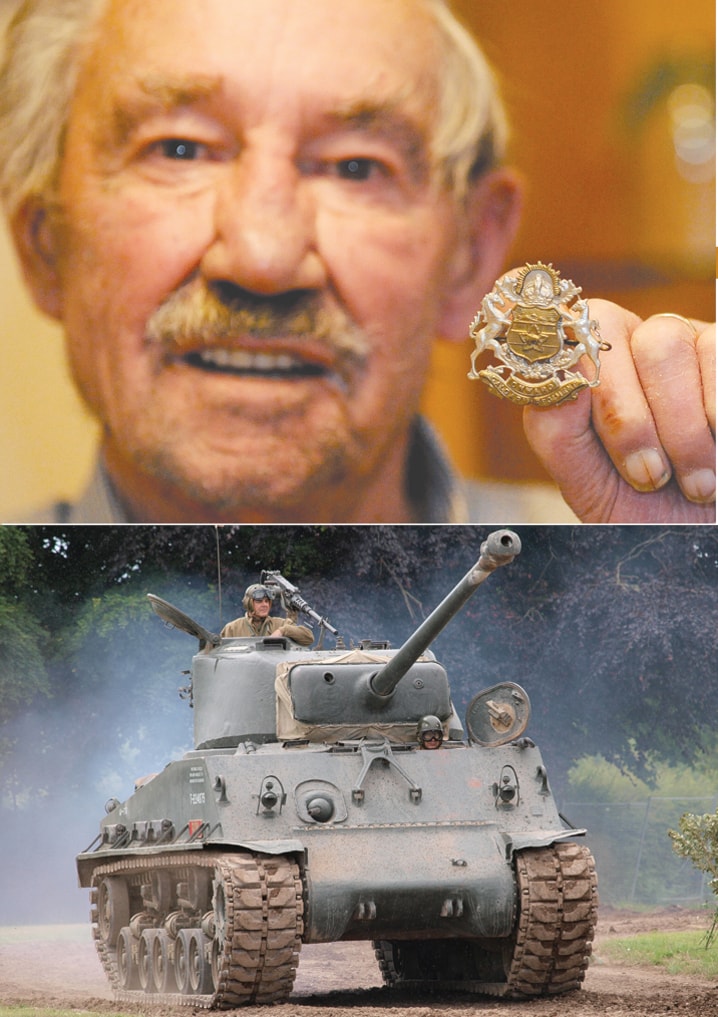The peace officer at Sylvan Lake was armed with a chest full of self-righteousness and a good grasp of county bylaws.
His indignation at seeing military vehicles, which he believed were tearing up municipal roads, was a poor match for the military squad with the Sherman tank and support vehicles he had encountered near Sylvan Lake.
It was 1948, just three years after the end of the Second World War, and a Red Deer-based tank and fuel truck had been making their way along mucky gravel roads for a practice in a field near Condor, says a retired Red Deer firefighter who was part of the tank crew.
The Canadian-built Sherman tanks, provided to army reserves in Red Deer just after the Second World War, were really a dream to drive, with one Rolls Royce engine powering each of its two rubber tracks, says Don Cline. Rather than a steering wheel, the unit was controlled by a set of tiller bars that regulated the power to the engines.
The tanks moved smoothly and lightly, unphased by road hazards that would shake the teeth out of people in wheeled vehicles and causing much less damage than what would have come from a wheeled vehicle or steel-tracked tank.
“You ever get in the drivers seat . . . you’re just amazed at how smooth they are,” says Cline, who had signed up in 1948 with a local reserve unit, A Squadron, King’s Own Regiment (Royal Canadian Armoured Corps).
The Red Deer unit had been combined in 1941 with Olds-based C Squadron because Red Deer didn’t have enough people to support a full squadron on its own, says Al Judson, curator and archivist for the King’s Own Calgary Regiment Museum. B Squadron was set up in Stettler and the King’s Own Regiment had also set up a number of detachments in smaller centres such as Coronation.
When the county patrol officer at Sylvan Lake tried to send their unit back to Red Deer, Cline showed how very lightly a rubber-tracked tank can tread, even on rain-soaked gravel roads.
But when the dispute couldn’t be settled, the officer in charge of the tank was able to phone his headquarters, which then informed the peace officer that the members of A Squadron and their vehicles were continuing to Condor, whether he liked it or not.
Trooper Cline, who was training as a driver, got his own licks in a few miles down the road when the red-faced peace officer had caught up with them and was trying to pass.
“We got west of Sylvan quite a ways and we used to drive them standing up, but then you had to drop down and check your instruments every once in awhile,” says Cline.
“So I had dropped down to check the instruments and come up and here was the county mountie — he had two wheels in the ditch and he was flailing mud all over the place. I accidentally pulled the lefthand tiller bar and nudged a bit toward him. He finally got by, but I imagine he was sure cussing by the time he did.”
Cline swears that if the peace officer had become stuck, the tank crew would have left him to fend for himself.
Jobs were scarce in 1948, when Cline turned 18 and was looking for work. He had been too young to sign up during the war. He stayed with the unit for six years, one of two members given full-time hours because they didn’t have any other work.
Cline says he’s not sure when the unit was finally disbanded and the two tanks based in Red Deer shipped on to new duties.
All of the Sherman Tanks from the King’s Own reserve units were later shipped up to Cold Lake where they were used as target practice for fighter jets, says Judson.
Miraculously, at least one survived.
Judson believes the refurbished Sherman tank pulled from target duty at Cold Lake and recently moved to the Olds Legion may well have been one of A Squadron’s tanks — at least he’d like to think it was.
The Canadian-built tank replaces an Israeli-built tank that was similar in many ways, but not an authentic relic of the Canadian military.
bkossowan@www.reddeeradvocate.com
— copyright Red Deer Advocate
